After months of grainy snaps of barely disguised development mules, the official announcement of the 992 GT3 comes as no surprise. But this might be a historic milestone for Porsche and its customers. With the scope for selling purely combustion cars narrowing significantly, the 992 GT3 represents something of a line in the sand. Yes, there will be Rennsport derivatives, Gen II cars and even Speedster spin-offs but, in terms of an all-new product without hybrid drive created by the GT Department at Weissach, the 992 GT3 could be a legacy vehicle.
What this latest car offers is the characteristic evolution from the last, with countless small but important gains leading to a dramatically more potent whole. Porsche has used the same naturally aspirated 4.0-litre flat-six Boxer engine from the previous generation 911 GT3RS and Speedster, with peak power now rated at 503bhp at 8400rpm with the redline still a heady 9000rpm. Torque is also up over the last GT3, this time to 470Nm at 6100rpm. Despite the increased size and complexity of the 992 series as a whole, performance gains are tangible once again with the new car hitting 62mph in just 3.4 seconds in PDK guise en route to a top speed of 198mph.
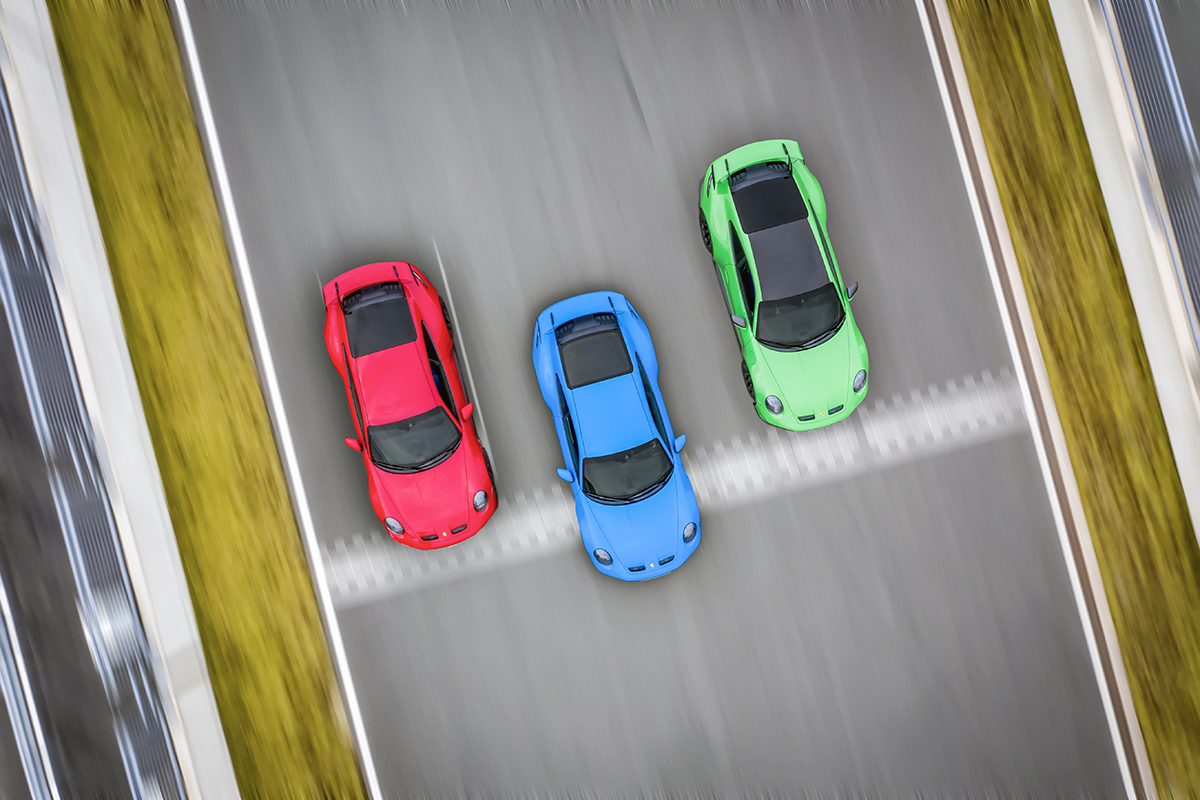
The 4.0-litre boxer at the heart of the car is another apogee of Porsche engineering and is something we may all look back on in wistful wonder in not too many years. Subtly optimised for use in the new 911 GT3, its pistons have been forged and the catalytic converter and particulate filter are now contained in a single housing.
Meanwhile, new engine supports increase rigidity and reduce vibration. Various motorsport technologies have also transferred to its design, including six individual throttle valves used in addition to the central throttle. This means each cylinder has its own valve for optimal air supply and, since they are now located much closer to the combustion chamber, the responsiveness and the controllability of the engine is improved. So too is the oil supply, with the GT3’s dry-sump featuring seven suction stages and a variable vane pump to ensure optimum pressure even under the heavy lateral loads of circuit driving.
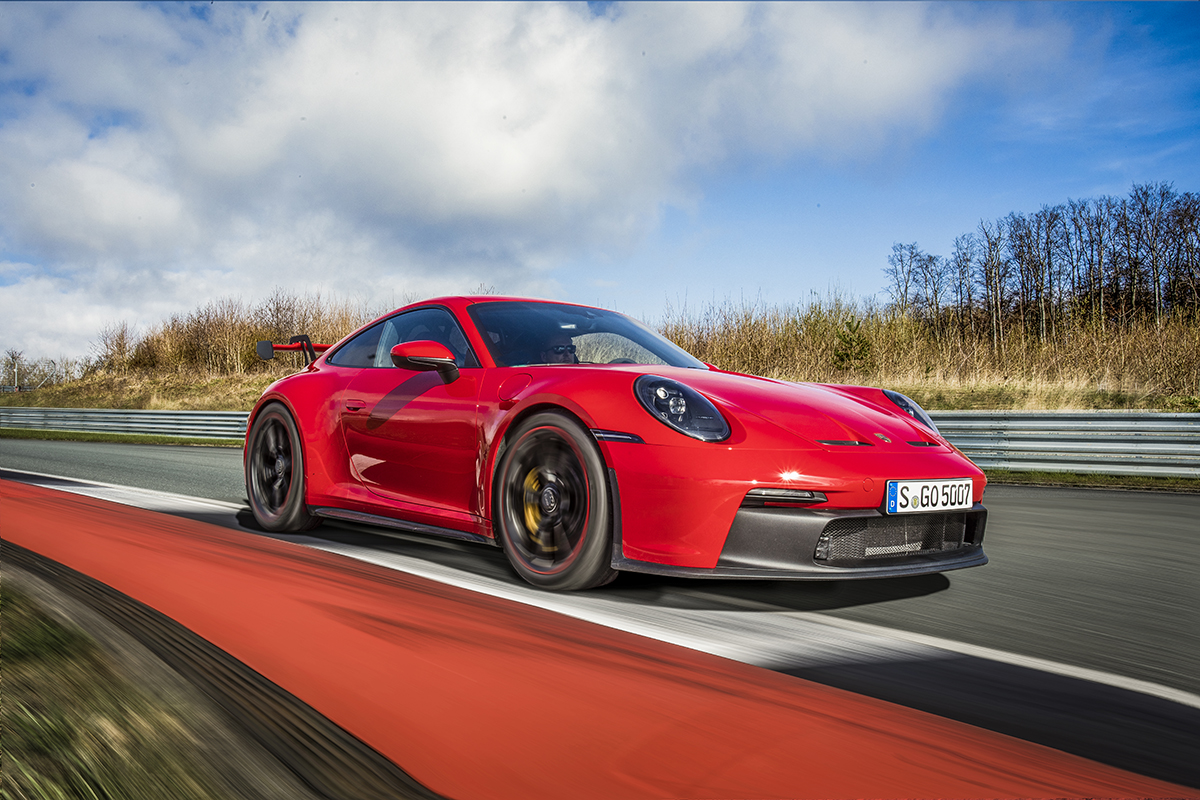
And it is track work that is once again the primary focus for the GT3. On the Nürburgring’s infamous Nordschleife, Porsche’s benchmarking home-from-home these days, the new GT3 set an unexpected record during final set-up work. Development driver Lars Kern took just 6:59.927 minutes over a full 12.9-mile lap, making the GT3 the first production car with a naturally aspirated engine to dip under the hallowed seven-minute mark.
Most of the gains highlighted by such a remarkable feat come from weight-saving elements and significantly increased aerodynamics. The extensive use of aluminium, carbon-fibre reinforced plastic (CFRP) bodywork and lightweight glass mean that the new car’s kerb weight (1418kg with a manual gearbox)is almost unchanged from its predecessor despite increased width, larger wheels and a significant increase in technical features.
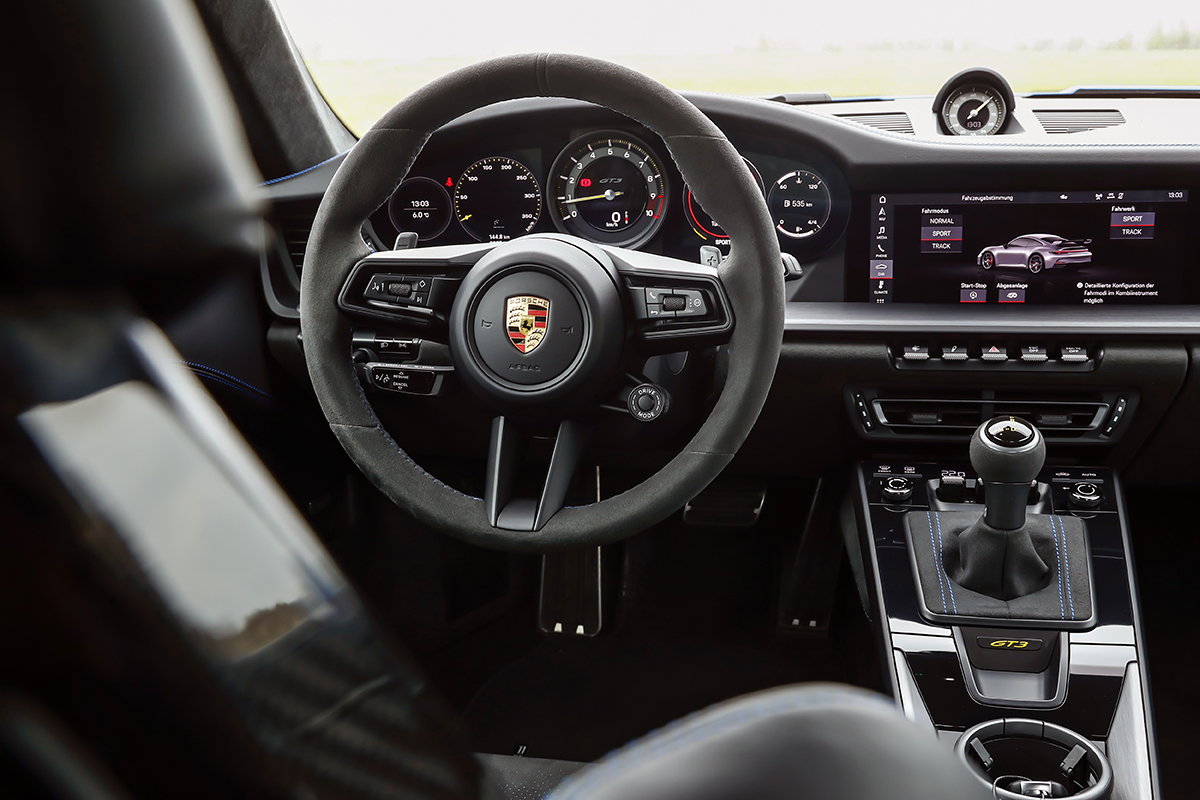
The 992 GT3’s body design also brings with it some fairly dramatic gains in downforce, thanks to a heavily revised aerodynamic package that includes a much larger rear wing with a motorsport-derived swan neck. This wing can be manually adjusted into the track-only ‘performance position’ which, alongside further adjustments to the front diffuser, Porsche claims will improve downforce by around 150 per cent over the last generation of GT3 – an incredible figure that promises to enable much higher cornering speeds.
Underneath, Porsche’s engineers have also fundamentally redesigned the GT3’s chassis. For the first time, it receives a motorsport-derived double-wishbone front axle which, in combination with Porsche Active Suspension Management and rear axle steering with a GT-specific set-up, offers greater steering sensitivity as well as superior high-speed stability.

And the lessons learned from motorsport don’t stop there. Further chassis enhancements include rose-jointing, integrated helper springs on the rear axle and full chassis adjustment for track use, including toe, camber and stabilisers. The GT3 also features mixed-sized wheel and tyre combinations, of course, with 20/21-inch forged alloy centre lock wheels and high-performance road tyres fitted as standard. Behind them lie even higher performance steel brakes as standard, with six-piston callipers on the front axle and four-piston brake callipers at the rear. And the lightweight and fade-free carbon ceramic option will still be available for road-oriented customers.
The new car is available from launch with PDK or manual transmission but, interestingly, the previous generation seven-speed PDK unit has been selected over the new eight-speed alternative currently offered in the 992 Carrera because it saves around 20kg. Porsche points out that this gearbox offers enhanced performance in the absence of an overdrive eighth gear and benefits from faster shifting and shorter ratios, both of which are better suited to the free-revving nature of the GT3’s naturally aspirated engine.
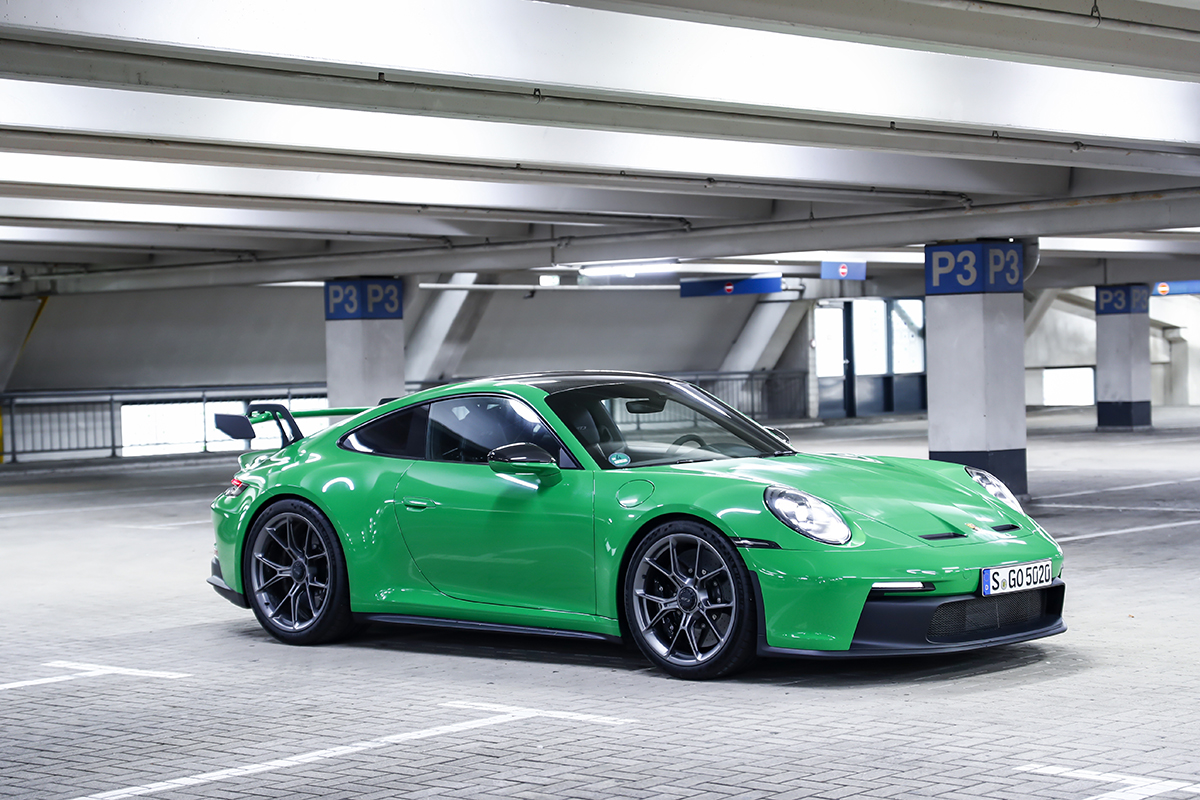
Nevertheless, Porsche will still be offering the six-speed manual gearbox that first appeared in the 991 (II) GT3 in 2017. Slower to accelerate, the three-pedal configuration will doubtless still be lauded as the driver’s choice, offering a more tangible connection to that remarkable drivetrain and being somewhat lighter overall. The manual cars will also be equipped with a mechanical rather than electronic rear differential and fitted with the auto-bliprev-matching function for downshifts; a benefit in terms of both performance and reduced wear on the transmission.
Inside the new GT3, that perfectly resolved 992 cockpit receives a track-inspired makeover, trimmed in hard-wearing Alcantara-like Race-Tex with inlays and sill guards in brushed aluminium. The car comes with four-way, electric Sports Seats Plus as standard, finished in black leather with Race-Tex centres and headrests embroidered with silver GT3 lettering. All GT3s receive a multifunction sports steering wheel, also trimmed in black Race-Tex, while cars equipped with the PDK benefit from a new GT-specific selector lever with manual-style shift gate and a Race-Tex gaiter. Meanwhile, buyers opting for the six-speed manual will also enjoy a new GT-only shifter, finished once again in Race-Tex.
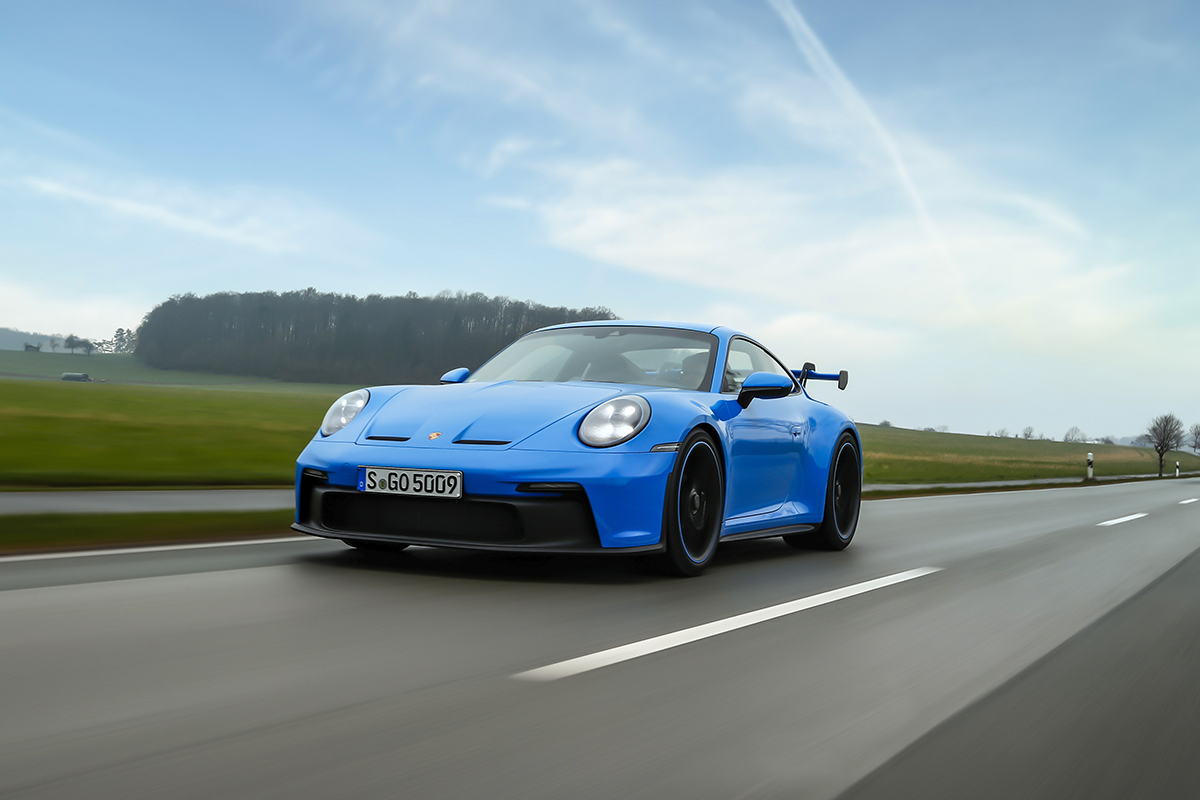
Another interesting new feature of the GT3 cockpit is a button to reduce the digital displays on either side of the central rev counter to performance-specific information such as tyre and oil pressure, oil and water temperature and fuel level. The display includes what Porsche refers to as a visual shift assistant, with coloured bars to the left and right of the rev counter and a change-up light. The latest Porsche Communication Management (PCM) is also fitted as standard and all GT3s come with the Porsche Track Precision App, offering real-time telemetry from hundreds of tracks around the world.
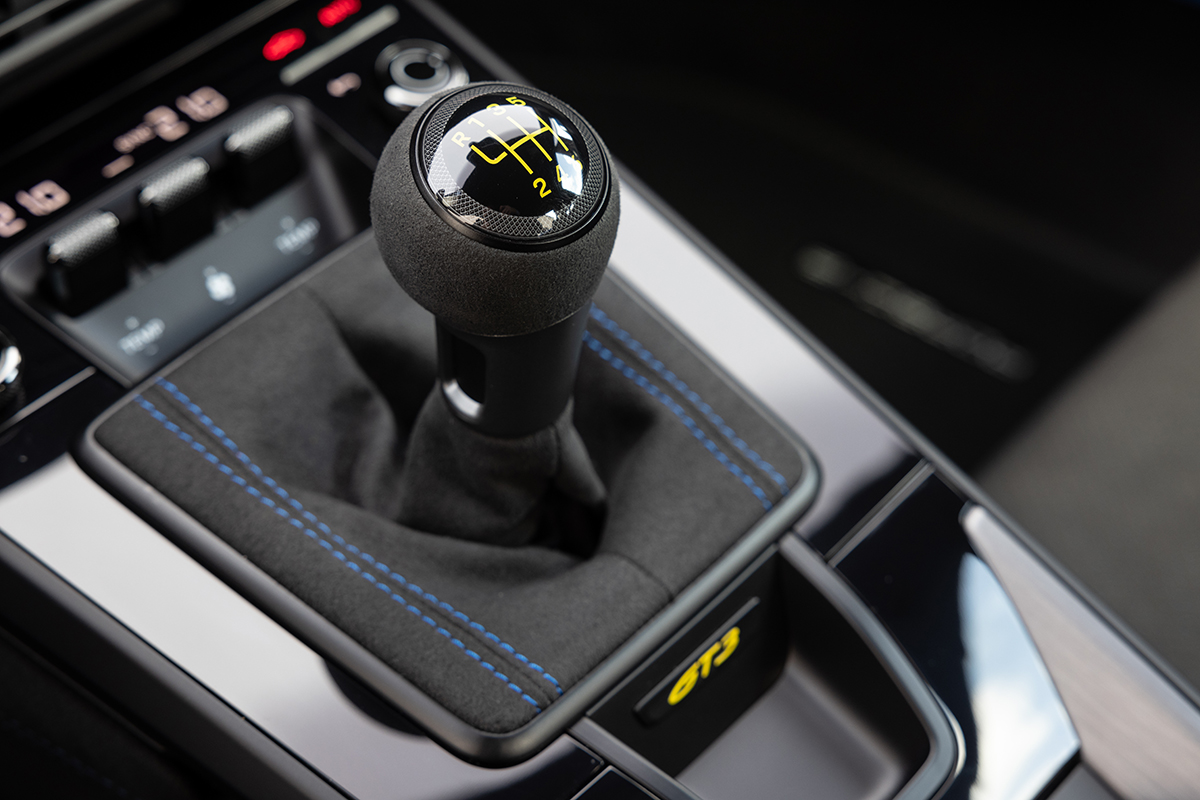
Extensive individualisation will be offered for the new GT3 via Porsche Exclusive Manufaktur, with GT3-specific options such as a lightweight roof made of exposed carbon fibre, exterior mirror tops made of carbon, darkened LED matrix main headlights and matching Exclusive design rear lights. Inside, the instruments, Sport Chrono stopwatch, seat belts and trim steps can be ordered in body-matching or contrasting colours.
The new 911 GT3 is on sale now with an on-the-road price of £123,100 and the first deliveries are set for May. For the lucky few who have been offered an allocation, it could be one to savour for a very long time to come.
Words: Matt Master